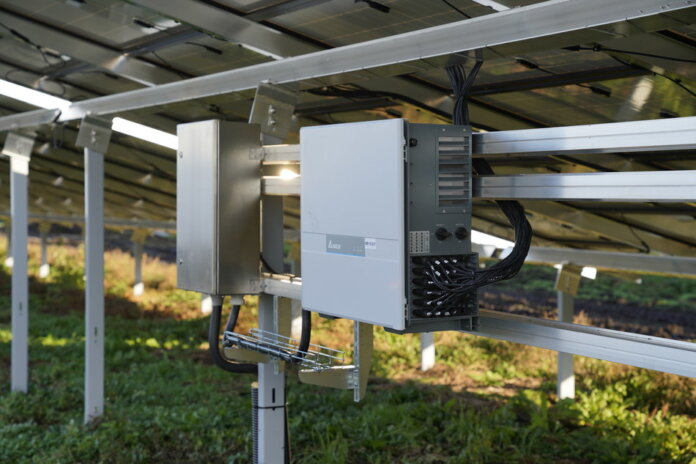Delta, a company that specializes in power and thermal management solutions, says it is providing its M70A series high-efficiency PV string inverters to Anumar, an engineering, procurement and construction (EPC) services provider, which is building the 120 MWp Solarpark Schornhof project, currently the largest ground-mounted solar park in Southern Germany.
The M70A inverters’ compliance with the new VDE Technical Connection Rules for High-Voltage (VDE-AR-N 4120) was a crucial factor in Anumar’s selection of Delta. To date, approximately one-third of the project’s required 1,500 Delta M70A inverters have been deployed at the solar park.
“At such a large project like Solarpark Schornhof, it was particularly important for us to have a trusted partner who is able to respond rapidly to our needs,” says Markus Brosch, CEO of Anumar. “We have been installing equipment made by Delta for many years and already have several solar power projects under our belts in partnership with them. Throughout those projects, Delta has always provided us with fast and easy to access support.”
Only half of the 150-hectare site will be covered with solar modules. The remaining 70 hectares will be transformed into a “green haven” to encourage biodiversity. This part of the project entails planting approximately 50,000 new shrubs and trees, with the existing perimeter woods being retained.
The energy conversion from the solar modules to the grid’s feed-in point is carried out in three stages. In the first stage, the solar energy from up to 12 module strings – a maximum of 70 kW – is combined into one inverter where it is converted to 400 VAC AC voltage. In the next stage, the energy from up to 30 inverters is then transferred to one of the 60 or more transformers that raise the voltage level to 20 kV. From the transformers, the energy is transferred to the substation built especially for the solar park. Finally, the voltage level is raised to 110 kV so that the energy can be fed into the high-voltage transmission network.
The Solarpark Schornhof project, located in the Neuburg-Schrobenhausen district to the southwest of Ingolstadt, is scheduled for completion by the end of the first quarter of 2021. It is financed with 90 MW power purchase agreements (PPA) and funding from German Renewable Energy Sources Act (EEG).
Photo: Delta’s M70A PV string inverters are being implemented in the largest ground-mounted solar park in Southern Germany
